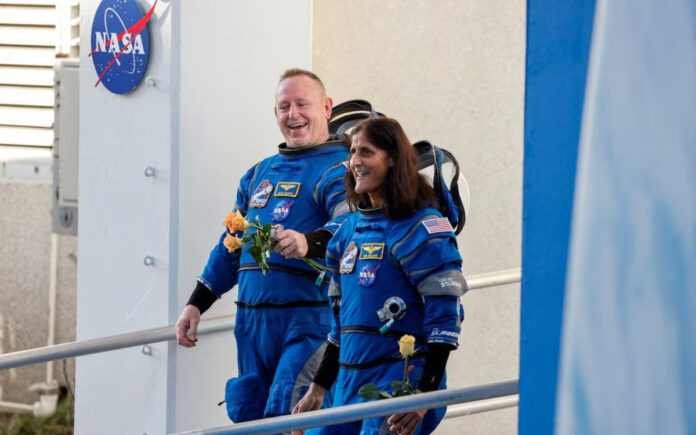Washington: NASA astronauts Butch Wilmore and Suni Williams, who unexpectedly spent nine months aboard the International Space Station (ISS) due to technical issues with Boeing’s Starliner capsule, have completed their post-mission rehabilitation and are now returning to active involvement with NASA and Boeing programs.
The pair returned to Earth in March and have since undergone a rigorous recovery process, which included weeks of physical therapy and conditioning to counteract the effects of long-duration space travel.
“Right now, we’re just coming off of the rehab portion of our return,” said Wilmore, 62, during an interview with Reuters. “Gravity stinks for a period, and that period varies for different people, but eventually you get over those neurovestibular balance type of issues.”
Initially slated for an eight-day test flight, Wilmore and Williams’ journey aboard the Starliner capsule turned into a prolonged mission when propulsion issues delayed their return. Their extended stay required them to adapt to the standard 45-day reconditioning process typically used for astronauts returning from long-term space missions. This included rebuilding muscle strength, re-establishing balance, and adjusting to Earth’s gravity again.
Throughout their recovery, Wilmore and Williams dedicated at least two hours daily to working with NASA’s astronaut strength and reconditioning specialists. Simultaneously, they began reintegrating into ongoing work with Boeing’s Starliner team, NASA’s space station division in Houston, and researchers across the agency.
“It’s been a little bit of a whirlwind,” said Williams, 59. “Because we also have obligations to all of the folks that we worked with.”
Williams noted that her recovery was slower in some areas, especially in terms of energy levels and sleep patterns. During the latter stages of rehabilitation, she struggled to wake up as early as she preferred.
“Then I’m up at four in the morning, and I’m like, Aha! I’m back,” she said.
Wilmore, who had pre-existing back and neck issues before launching into space, experienced relief during the mission due to the lack of gravitational stress. However, the discomfort returned almost immediately after landing.
Also Read | Sudan’s War Cripples Infrastructure, Demands Massive Yet Elusive Rebuild
“We’re still floating in the capsule in the ocean, and my neck starts hurting, while we still hadn’t even been extracted yet,” he said, laughing.
Space travel poses unique physiological challenges, as the human body evolved over millions of years to function under Earth’s gravity. Extended time in microgravity leads to muscle atrophy, cardiovascular changes, and exposure to higher levels of solar radiation—all of which require careful post-mission recovery and monitoring.
Starliner Troubles and Future Prospects
The Starliner mission was disrupted by propulsion system problems that forced NASA to return the capsule uncrewed last year. As a result, Wilmore and Williams were incorporated into the station’s standard long-duration crew rotation.
Boeing, which has already absorbed $2 billion in losses on the Starliner program, now faces a critical decision. NASA may require the spacecraft to complete another uncrewed test flight before it can transport astronauts again. This would not be unprecedented—Boeing spent $410 million on a similar mission in 2022 following a failed test in 2019.
Also Read | JD Vance Pushes for Pro-Bitcoin Policy to Challenge China’s Ban
Reflying the capsule without astronauts appears to be a prudent step, according to Williams. Drawing comparisons to SpaceX and Russian spacecraft that successfully conducted uncrewed test flights before carrying humans, she emphasized the need for a cautious approach.
“Reflying Starliner uncrewed seems like the logical thing to do,” she said. “I think that’s the correct path,” Williams added, expressing hope that both Boeing and NASA will soon agree on the decision.
NASA officials have stated that data from ongoing Starliner testing throughout the summer will be crucial in determining whether the spacecraft is fit to carry astronauts on its next flight.



